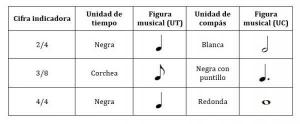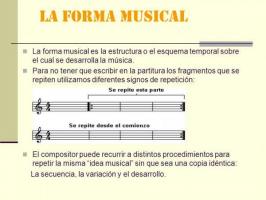Main ELEMENTS of MUSIC
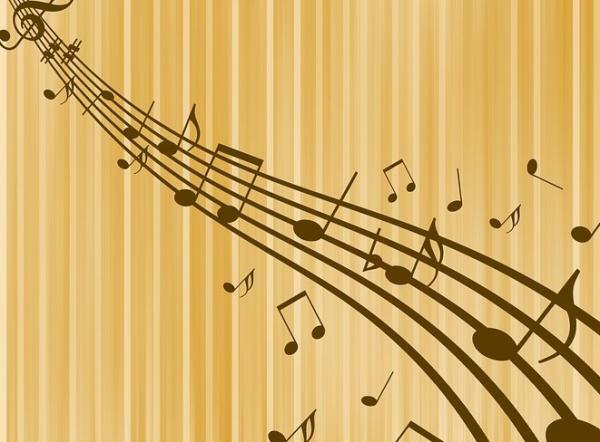
If there is something great in art, it is capacity for free expression and the diversity that we can find in it. As art depends on creativity, we know that even if the elements are the same, everything will change depending on how they are used. The perception and vision of each artist gives us a unique and unmatched result.
The music happens the same and it is interesting to analyze what elements can be used to create this vast variety of works, despite the fact that we are talking about a structured and conventional language. In this article by a TEACHER we will talk about the main elements of music and the role they play in the diversity of ways in which it results.
Index
- The 3 most prominent elements of music
- Musical elements related to melody and harmony
- Musical elements related to rhythm
- Elements of music related to style and performance
The 3 most prominent elements of music.
Music is made up of sound and sound has physical behaviors of different characteristics. This is what makes music so dynamic and has a wonderful physical effect, which is then transformed into a psychological and even sentimental or spiritual experience.
Sound has pitch, frequency, timbre... among other physical characteristics that makes its behavior a very interesting phenomenon. The relationship that is created between sounds is also fascinating. In addition, we can play with the time factor, the duration of a sound or sounds. If we take into consideration all these qualities of sound, we acquire 3 main elements of music: melody, harmony and rhythm. These, in turn, are related to more elements that we will mention.
Melody
The melody is when we create a succession of notes with different pitch. Generally speaking, the melody of a song or work is that which we can sing, hum or whistle. As the melody we only define it by a note that sounds at the same time (2 simultaneous notes already create harmony), when we make this succession of notes we call it melodic line. It is important to mention that for a melody to be a melody, the pitch of the notes must change. Otherwise, what we are creating is not melody but rhythm.
Harmony
Harmony in general terms is the effect resulting from the relationship between 2 notes or more. That is, when two notes sound at the same time, we are already creating harmony. Harmony can be probably the most complex element to analyze, because it depends on all the possible relationships that are created with the sounds. Remember that there are 12 notes (taking into account the semitones) and that in a chord we can have 4, 5, 6 or more notes. When we do math, the number of combinations we can make is overwhelming.
Rhythm
Rhythm is that element of music that makes us want to anticipate, want to hear what is coming, clap, move our feet, or even dance. It is also the element that allows music to express itself over time, it can give a sense of urgency, tension, joy or peace. At the same time, it also brings variety, since if we listened to music that has exactly the same rhythm at all times, it would be too monotonous and boring.
In simple terms, the rhythm is the succession of sounds one after the other which eventually has a cycle or a pattern. In the rhythm we do not take into account the harmony or the melody, because it does not depend on the tuning.
These have only been the basic elements, but if we go to specific details, we can talk about more related elements.

Image: Google Sites
Musical elements related to melody and harmony.
Now we are going to talk about the elements of music that are related to melody and harmony in order to better understand how music works.
Music scales
The scale is a ascending or descending note succession, that maintains certain distances between one note and another. Scales are important in determining the tonality in music, since depending on the organization of the notes, we find moments of tension and resolution. It is these two factors that make music dynamic at the harmonic level.
There are several scales and each one has a different sound. For example, the major scale has a bright loudness, while the minor scale has a dark loudness. There are also scales that are related to style, such as the blues scale, or to culture, such as the pentatonic scale that reminds us of eastern countries like China.
Tonality
Tonality is the system that gives structure to the music and is defined by the scales, as we mentioned earlier. Tonality defines the melody and harmony of a song or work. It could be said that when composing or improvising, we know which notes we can use depending on the tonality. Although sometimes the tonality can be modified a lot, even within the same work, this is the element that allows us to organize and understand the music. The more ambiguous the key, the more difficult it is to understand the music.
Musical structure
The musical structure is the way in which we organize the parts of a work. This allows us to interpret a work or a song as if it were a story, developing its content with an evolution that gives diversity to the intensity of each part. Here we also include the repetition indications in the event that a part is played more than once, or in the case that we must return to a specific part.
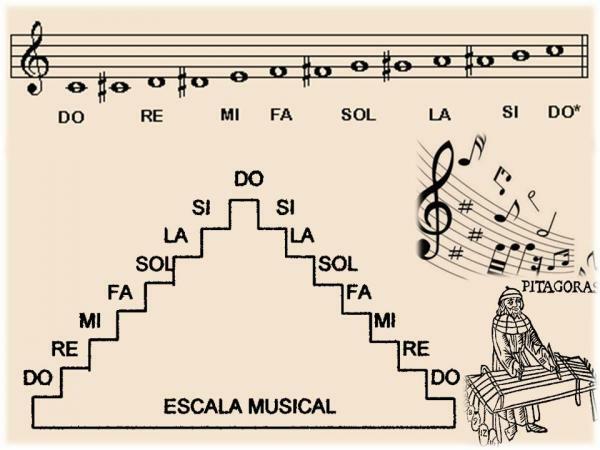
Image: Classical music
Musical elements related to rhythm.
The rhythm also has some elements that we must take into account and know, for that reason, we will discover them below:
Pulse
Pulse is conceptually confused with rhythm and meter because they are closely related. For practicality we can say that the pulse It's the way we tell the music it's how we rhythmically divide each measure. Let us remember that the compass is the musical unit that allows us to measure the musical parts, and that in it we can only place a number of notes, determined by the metric.
Metric and time signature
The metric is the number in fraction form that is placed at the beginning of the staff and dictates the number and duration of the notes in one measure. The time signature is another concept that we use to categorize the metric (simple, compound or binary and ternary time signature). The metric is important because, by modifying the way we perceive the rhythm, it gives a new meaning to the organization of the notes and how we understand them to interpret them. We can have the same melody and the same harmony, but if the meter changes, your sense of appreciation will also change.
Tempo
The time is the speed with which the music is played. Higher speed equals more notes in less time and this influences our way of perceiving music because, the more elements appear in a short period of time, the greater the attention required and therefore the tension increases.
In music, tempo is measured by "Bpm" (from English: beats per second) and there are names assigned depending on the speed range. For example Adagio (56-66bpm), Allegro (110-132bmp) and Presto (168-177bmp).
Duration
Duration is the time it takes a work to be interpreted from beginning to end. This will depend on the tempo, the number of measures and the number of repetitions in a work or song.
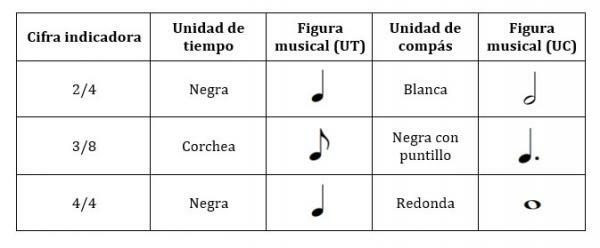
Image: Write songs
Elements of music related to style and interpretation.
Depending, also, on the interpretation and musical style, we find very different elements. Here we discover them.
Instrumentation
We speak of instrumentation when we refer to the instruments with which a work is performed. The instrumentation can vary in type of instruments and in quantity. There is a wide variety of musical instruments and they all have very different qualities thanks to the way they are built. This also influences the limitations they have when touching.
We can have the same song that, when interpreted by different instruments, results in a totally different song.
Musical genre
The musical genre is not exactly an element but the result we get by combining all the above elements. We relate certain styles or musical genres thanks to the tendencies that we have when combining them.
We know, for example, that we know general rock as such because it is tonal music, played in 4/4 by a band that has at least guitar, bass, drums and a singer, who is played at a moderately fast tempo, who has some typical chord progression dictated by tonality and whose songs last around 4 minutes. As in rock, we associate certain musical elements with styles such as Funk, Jazz, Bossa Nova, Salsa, etc.
It is the combination of all the elements that we mentioned that allows us to play with music and create totally new and original works. It is easy to say that music is an art without limits because it depends on the human imagination and the creativity with which we experiment with these elements.
We hope you have enjoyed reading this article by a PROFESSOR and we invite you to share your comments with us.
If you want to read more articles similar to Main elements of music, we recommend that you enter our category of Musical language.

